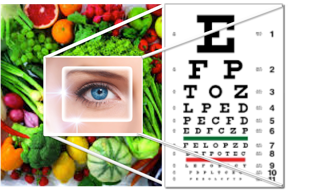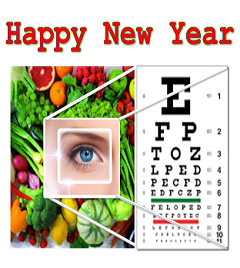10 New Year’s Resolutions for Your Eye Health
Now that the in-laws have gone, the beer fridge is empty and the BBQ and pool have been well used it’s time to turn our attention on our New Years Resolutions to improve our health. Some of you will make resolutions to lose weight, exercise more, more time for family and more time for pleasure reading.
Because your vision is vital to most resolutions that people make, I have compiled a list of New Year’s Resolutions for Your Eyes and Vision:

The Top Ten Eye and Vision New Year’s Resolutions:
1. Make sure that you have your eyes examined with 200 degree Optomap retinal scanner as recommended by your optometrist.
Vision changes can be gradual and you may not realise you are having a problem. Many conditions, such as glaucoma, start with no symptoms. Also, diseases such as retinal detachments, macula degeneration, ocular tumours, diabetes and high blood pressure are frequently first detected with a retinal scan.
2. If you have children, make sure you have their eyes examined.
The recommended age for the first eye exam is 6 months. Children who are in school should have their eyes examined every year (and school and paediatrician vision screenings do not count).
3. If you should be wearing glasses for driving and you’re not, just do it.
This is especially true at night, or in the rain, when vision is more difficult and bright lights make it harder to see.
4. If you smoke, quit.
It has been clearly established that smoking can increase the risk of development of conditions such as cataracts, macular degeneration and dry eye. Seek professional help to quit if needed.
5. Make sure your eyes have adequate UV protection.
Your regular glasses, sunglasses, and contacts can all have UV protection. Limiting UV exposure reduces the risk of skin cancer of the eyelids, cataracts, pterygium and other conditions.
6. Wear your contact lenses no longer than recommended.
If you are sleeping in your contacts and your eye doctor did not explicitly fit you in contacts for this purpose, stop.
If you abuse contact lenses, you put yourself at risk of eye infections that are not only painful but also have the potential to result in permanent vision loss. Stop playing Russian Roulette.
7. Never “top off” contact lens solutions.
Use only the solutions recommended for you.
Never save solution for the next day and add a little more to fill the case. Start each night with fresh solution. The majority of contact serious lens-related infections comes from not taking care of them as recommended. Contacts are medical devices that only work well if they are cleaned regularly and appropriately.
8. Change your contact lens case monthly.
Contact lens cases can contain micro-organisms that are very difficult to remove. The best remedy is to start fresh with a new case. Most solutions include a new case, ditch the old one and use the new.
9. When you work at the computer, read, or play handheld games, take visual breaks to limit eyestrain.
Remember the “20/20-20/20 Rule”: Look up from your work every 20 minutes to an object 20 feet or more away, for 20 seconds and take 20 blinks. This is can keep you more comfortable and efficient. If you spend a significant amount of time on the computer, glasses specifically designed for the computer can reduce or eliminate eyestrain as well improve comfort of the neck.
10. Ask your optometrist if nutritional supplements are a good idea for you and your eyes.
There have been scientific studies that have shown that certain supplements can be appropriate for certain eye conditions, such as macular degeneration, and dry eye. They might be right for you, but they should only be of high quality and use should be discussed with your optometrist.
After reading this list of New Years Resolutions, pass it onto a friend or family member you care about. If you need help with any of these, feel free to call us on 07 4957 3066 or stop by the practice.
Be Well in !
Dr Ieuan H. Rees. (Optometrist)
Buck & Todd Optometrist
Located at 103 Alfred Street, Mackay, 4740.



